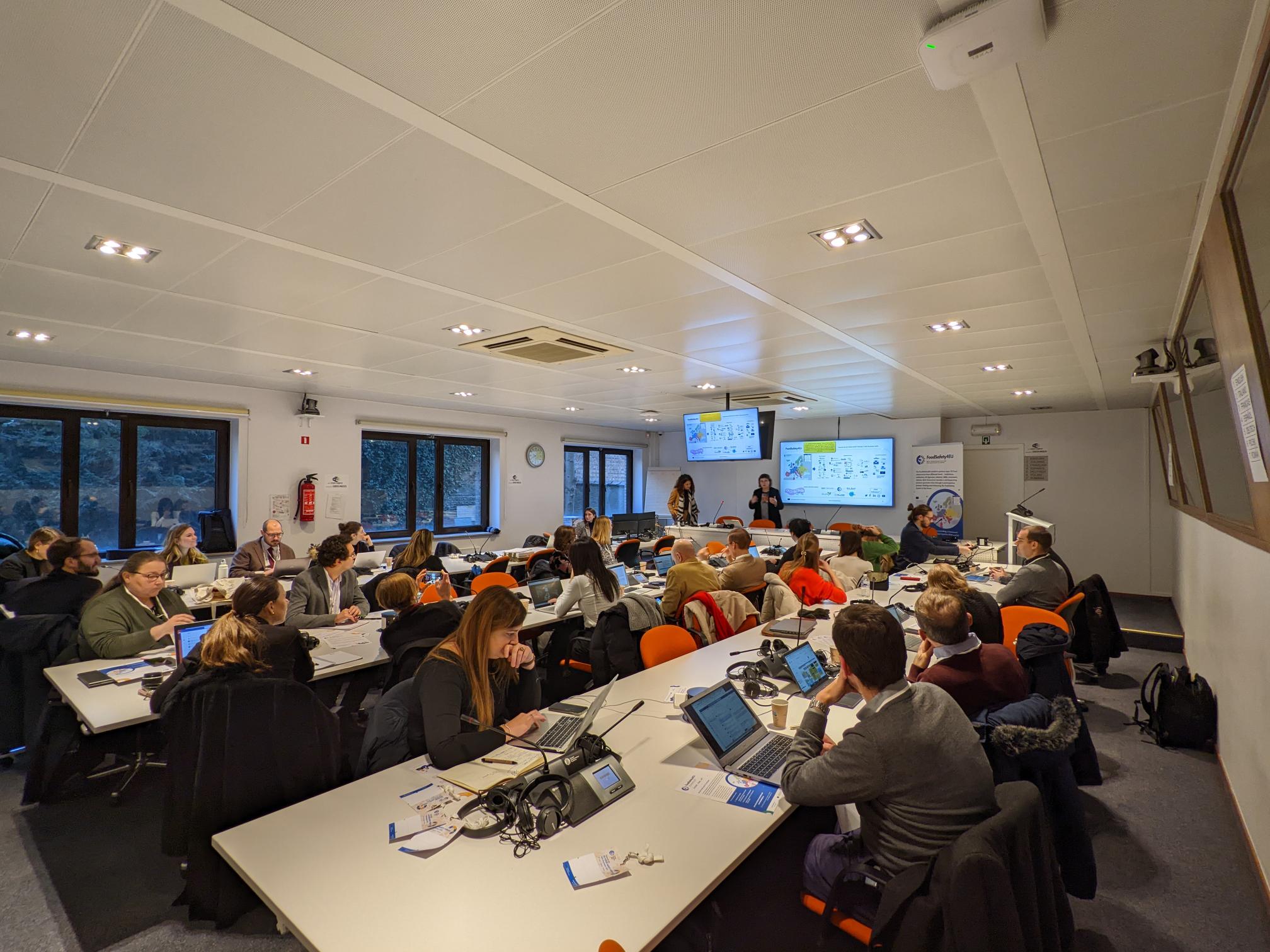Should we be worried about genetically modified food?

What are GMOs and GM foods?
Genetically modified organisms (GMOs) represent any organism (i.e., microorganisms, plants, animals) whose genome (DNA) has been modified by means of recombinant DNA technology (also called genetic engineering) for the purpose of enhancing certain traits. This means that specific genes are transferred between different organisms, even between different species, in order to achieve desirable traits. The food produced from or containing such organisms is referred to as GM foods (1).
What are the advantages of GM foods, and the most common examples?
GM foods have multiple perceived advantages for producers, consumers, and for the environment, while providing the ever-growing population with more food.
Increased nutrition value, better tasting food, but also insect resistance (with subsequent lesser use of pesticides), but also parasite, herbicides, drought, heat or cold resistance are commonly seen in GM plants. This helps grow stable and disease-resistant products faster and in a more sustainable fashion (i.e., less water and fertilizers consumption) (2,3). GM foods can also contribute to increased food supply, reduced producing costs and longer shelf life, among other economic benefits (3). Some of the most common GM crops and plant-based foods (with one or more of the above-mentioned features enhanced) include corn, rice, soybean, canola, sugar beet, potato, eggplant, tomatoes, carrots, apples, strawberries, etc (4). Genetic modifications can also be introduced in animals to achieve a faster growth rate, as in the case of fish (e.g., salmon, trout, carp), or to improve biological and nutritional properties of animal food products, such as cow and goat milk with increased tolerance for high temperatures, low content of lactose, or modified content of casein (5,6).

What are the main health concerns linked to GM foods?
The concept of GM food has been introduced decades ago, and this type of food has been considered safe for consumption. Yet there are important concerns regarding human health, especially when talking about long term effects (4,7).
Some of the key risks or reported adverse events include:
Allergies. Genetic manipulations could lead to the expression and synthesis of new proteins, or of proteins that were previously absent in a specific organism. This can potentially lead to the development of new allergens, primarily alimentary proteins. For example, GMO soybeans modified to be rich in methionine by using a gene derived from a Brazil nut could trigger an allergic reaction in people sensitive to Brazil nuts (8).
Toxicity. Genetic modifications could give rise to toxic products that could have either direct short-term negative effects or long-term effects regarding cancer development or reproductive toxicity. For example, genes normally not expressed or expressed at low levels could, after genetic manipulation, lead to a higher production of a protein that has toxic or cancer-promoting properties (9). For example, milk from genetically modified cows was suggested to have an impact on increasing serum levels of a hormone (IGF-1) known for positively correlating with lung, breast and colon cancers (9).
Antibiotic resistance. Antibiotics are used in early stages of the genetic manipulation process as markers to select organisms that have successfully received a new gene. There is a concern that genes conferring resistance to antibiotics could be transferred to soil microbial communities or human bacterial microflora, potentially leading to the development of antibiotic resistance (10).
Even though various GM foods-related adverse events have been identified in animal experiments, it is important to highlight that animal studies on GM foods’ safety are not convincing enough, do not necessarily translate to humans, and frequently present flaws in study design (11). There is still no clear evidence on the negative effects of GM foods on humans (11). Despite GM foods appear to be safe and not to be any more harmful than traditional food, a rigorous safety assessment of each GMO intended for consumption should be performed.
Who is responsible for risk assessment of GMOs?
The European Food Safety Authority (EFSA) assesses any risks possibly related to GMOs, both regarding health and environment, and provides scientific advice on their safety to the risk managers of European Commission and EU Member States (1). In turn, they decide on the authorization of GMOs on the market. GMOs are subjected to strong testing and safety assessment carried out before any such products are even considered for market approval.
How are GMOs quantified in food? Are GM foods labeled?
To test GM foods, molecular techniques such as quantitative polymerase chain reaction (qPCR) are routinely implemented to quantify the GMOs content (%) of foods and raw materials (4). Labeling is important to provide information for consumers and allow them to make an informed choice. In the EU, the food products containing more than 0.9% of GMOs ingredients must be properly labeled. In the case of pre-packaged food, one of the following labels must be indicated: “genetically modified” or “produced from genetically modified [name of the organism]”. If the product does not have a packaging, similar labels must be clearly displayed near the product (e.g., a note on the supermarket shelf) (12).
The bottom line: Is there a reason for concern?
It is important to know that the products of genetic manipulations can usually be identified beforehand, and their amount and effects can be assessed before public consumption. Moreover, any potential risk (allergenic, toxic, genetic hazard) can be recognized and evaluated if health concerns arise. Most of the speculated harmful effects are observed in experimental studies and animals only, that do not always reflect human physiology accurately. To date, the evidence on the negative effects of GMOs in humans is still insufficient (11).
However, more research on safety oriented towards human population is warranted. In addition to the rigorous testing for market authorization the appropriate labelling and availability of reliable information on conducted modifications remains crucial. That way, consumers can make informed decisions whether or not to consume food containing GMOs.
References:
1. EFSA. Genetically modified organisms (GMO). [cited 2023 Apr 20]; Available from: https://www.efsa.europa.eu/en/topics/topic/gmo
2. Kumar K, Gambhir G, Dass A, Tripathi AK, Singh A, Jha AK, et al. Genetically modified crops: current status and future prospects. Planta. 2020 Apr;251(4):91.
3. Karalis DT, Karalis T, Karalis S, Kleisiari AS. Genetically Modified Products, Perspectives and Challenges. Cureus. 2020 Mar 18;12(3):e7306.
4. Bawa AS, Anilakumar KR. Genetically modified foods: safety, risks and public concerns—a review. J Food Sci Technol. 2013 Dec;50(6):1035–46.
5. Zhao J, Lai L, Ji W, Zhou Q. Genome editing in large animals: current status and future prospects. National Science Review. 2019 May 1;6(3):402–20.
6. Matthew B. Wheeler. Transgenic Animals in Agriculture. Nature Education Knowledge [Internet]. 2013;4(11). Available from: https://www.nature.com/scitable/knowledge/library/transgenic-animals-in-agriculture-105646080/
7. Maghari BM, Ardekani AM. Genetically modified foods and social concerns. Avicenna J Med Biotechnol. 2011 Jul;3(3):109–17.
8. Nordlee JA, Taylor SL, Townsend JA, Thomas LA, Bush RK. Identification of a Brazil-Nut Allergen in Transgenic Soybeans. N Engl J Med. 1996 Mar 14;334(11):688–92.
9. Kramkowska M, Grzelak T, Czyżewska K. Benefits and risks associated with genetically modified food products. Ann Agric Environ Med. 2013;20(3):413–9.
10. Un Jan Contreras S, Gardner CM. Environmental fate and behaviour of antibiotic resistance genes and small interference RNAs released from genetically modified crops. Journal of Applied Microbiology. 2022 Nov 1;133(5):2877–92.
11. Shen C, Yin XC, Jiao BY, Li J, Jia P, Zhang XW, et al. Evaluation of adverse effects/events of genetically modified food consumption: a systematic review of animal and human studies. Environ Sci Eur. 2022 Dec;34(1):8.
12. EFSA. Traceability and labelling – GMOs and GM products. [cited 2023 Apr 20]; Available from: https://food.ec.europa.eu/plants/genetically-modified-organisms/traceability-and-labelling_en
Latest Articles
hahah
nana
Food4Future_cz

New Tools for Preventing Harmful Bacteria in Ready-to-Eat Foods

Should we be worried about genetically modified food?

Pooling Stakeholders and Resources for shaping the Food Safety System in Europe
Most Interesting Articles

FoodSafety4EU PRE-FORUM 2022 – “The new sustainability regulation: how to integrate it into food safety?”

BiOrangePack Project: Smart and innovative packaging, post- harvest rot management and shipping of organic citrus fruit

EU GREEN WEEK – How can we communicate food safety in the context of sustainable food systems?
